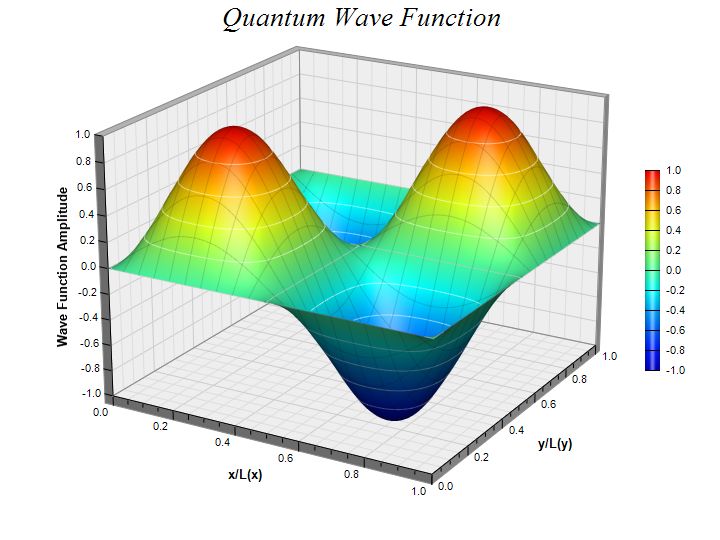#!/usr/bin/perl
# In the sample code, the ChartDirector for Perl module is assumed to be in "../lib"
use File::Basename;
use lib (dirname($0)."/../lib") =~ /(.*)/;
use perlchartdir;
# The x and y coordinates of the grid
my $dataX = [0, 0.1, 0.2, 0.3, 0.4, 0.5, 0.6, 0.7, 0.8, 0.9, 1.0];
my $dataY = [0, 0.1, 0.2, 0.3, 0.4, 0.5, 0.6, 0.7, 0.8, 0.9, 1.0];
# The values at the grid points. In this example, we will compute the values using the formula z =
# sin((x - 0.5) * 2 * pi) * sin((y - 0.5) * 2 * pi)
my $dataZ = [(0) x (scalar(@$dataX) * scalar(@$dataY))];
for(my $yIndex = 0; $yIndex < scalar(@$dataY); ++$yIndex) {
my $y = ($dataY->[$yIndex] - 0.5) * 2 * 3.1416;
for(my $xIndex = 0; $xIndex < scalar(@$dataX); ++$xIndex) {
my $x = ($dataX->[$xIndex] - 0.5) * 2 * 3.1416;
$dataZ->[$yIndex * scalar(@$dataX) + $xIndex] = sin($x) * sin($y);
}
}
# Create a SurfaceChart object of size 720 x 540 pixels
my $c = new SurfaceChart(720, 540);
# Add a title to the chart using 20 points Times New Roman Italic font
$c->addTitle("Quantum Wave Function", "timesi.ttf", 20);
# Set the center of the plot region at (360, 245), and set width x depth x height to 360 x 360 x 270
# pixels
$c->setPlotRegion(360, 245, 360, 360, 270);
# Set the elevation and rotation angles to 20 and 30 degrees
$c->setViewAngle(20, 30);
# Set the data to use to plot the chart
$c->setData($dataX, $dataY, $dataZ);
# Spline interpolate data to a 80 x 80 grid for a smooth surface
$c->setInterpolation(80, 80);
# Set surface grid lines to semi-transparent black (dd000000)
$c->setSurfaceAxisGrid(0xdd000000);
# Set contour lines to semi-transparent white (80ffffff)
$c->setContourColor(0x80ffffff);
# Add a color axis (the legend) in which the left center is anchored at (645, 270). Set the length
# to 200 pixels and the labels on the right side. Use smooth gradient coloring.
$c->setColorAxis(645, 270, $perlchartdir::Left, 200, $perlchartdir::Right)->setColorGradient();
# Set the x, y and z axis titles using 10 points Arial Bold font
$c->xAxis()->setTitle("x/L(x)", "arialbd.ttf", 10);
$c->yAxis()->setTitle("y/L(y)", "arialbd.ttf", 10);
$c->zAxis()->setTitle("Wave Function Amplitude", "arialbd.ttf", 10);
# Output the chart
$c->makeChart("surface2.jpg") |
